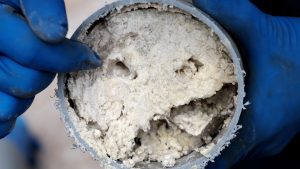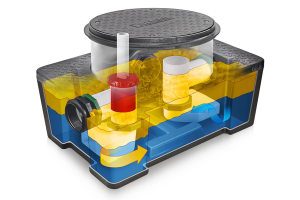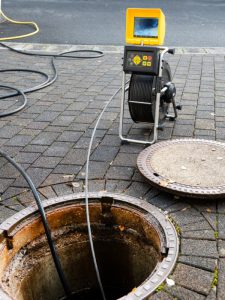A grease trap intercepts grease and oil from wastewater in kitchens before that water flows through to the sewer lines. This works because grease and oil aren’t as dense as water, so these substances float on top. A grease trap catches this grease using a series of “baffles.” These traps eventually need to be cleaned once the grease buildup has become too thick. Our team offers commercial services. Many businesses—including restaurants and other businesses within the food service industry—need to schedule regular grease trap cleaning.If you want your commercial kitchen to keep serving you well, it’s important to keep your lines free of clogs. A backup is bad for business. Call us to prevent that problem before it affects your reputation or your bottom line.
Comprehensive Grease Trap Problems
- Slow drainage and backup warning signs
- Foul odors from kitchen drains and grease traps
- Grease overflow symptoms and immediate actions
- Fruit flies and pest attraction issues
- Health department violation scenarios
- FOG (Fats, Oils, Grease) buildup visual indicators
- Emergency overflow cleanup procedures
Types of Grease Traps 
- Under-sink grease traps for smaller establishments
- Large capacity outdoor grease interceptors
- Hydro-mechanical grease interceptors
- Gravity grease interceptors
Specialized Services
- Engineering, plans and specs
- Grease trap sizing and capacity assessments
- Retrofit installations for compliance upgrades
Regulatory Compliance and Requirements
- Miami-Dade County grease trap regulations
- Florida Department of Environmental Protection requirements
- Health department inspection preparation
- Required cleaning frequency by jurisdiction
- Proper disposal documentation and manifests
- FOG program compliance assistance
- Permit requirements and renewals
Emergency Grease Trap Services
-
- 24/7 emergency overflow response
- Holiday and weekend availability
- Rapid response for health department violations
- Temporary bypass solutions during major repairs
- Emergency contact prominently displayed
- Same-day service availability
Technology and Equipment
- High-powered vacuum trucks and specifications
- Specialized pumping equipment for different trap sizes
- Video inspection capabilities for drain assessment
- Grease trap monitoring systems and alerts
- Modern cleaning techniques and equipment
- GPS tracking for service verification

